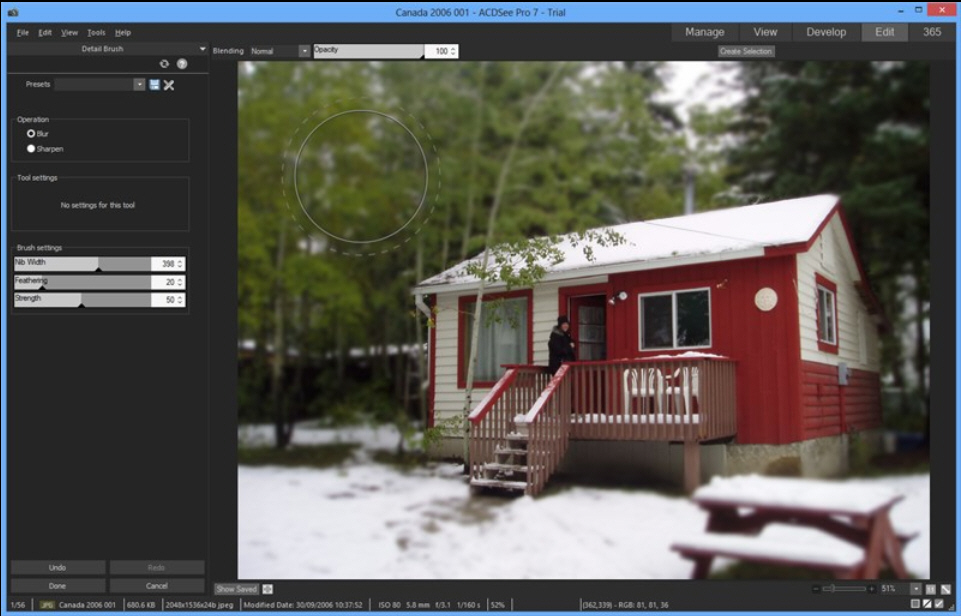ACDSee and ACDSee Pro gain new filters, editing tools and interface improvements

Seattle-based ACDSee Systems International has released both ACDSee 17.0 and ACDSee Pro 7.0, major new releases of its photo tools for Windows. The new releases come less than 12 months after the last major updates, but offer competitively priced upgrades that are less than half the price of the full versions at $29.99 and $59.99 respectively.
The new releases include a number of additional editing tools and filters in addition to a tweaked user interface and enhancements to key areas such as image management.
Both tools gain a new Radial Gradient tool, which can be applied to other editing effects to subtly progress across the user’s photo. Uses for the tool include off-center and multiple vignettes and drawing focus to a specific object. ACDSee Pro also adds a similar Linear Gradient tool.
Other new features common to both applications include a new Home base allowing users to create multiple ACDSee databases, an improved user interface placing photos firmly at its center, the ability to find images with no assigned keywords and support for the new WebP format.
ACDSee Pro 7 users gain a large number of exclusive new features on top of these updates. Chief among these is support for non-destructive photo repairing using the program’s Heal and Clone options to erase dirt, dust and other unwanted objects.
Also new in version 7 is a sharpen/blur brush, allowing users to selectively paint over parts of an image to bring them into (or out of) focus. These are joined by a Detail brush, which works in a similar way to dodge and burn tools by accenting specific details via the stroke of a brush. Users can emphasize parts of an image by repeatedly brushing over the same area.
Version 7 also adds support for a secondary monitor, allows users to copy and paste supported metadata (IPTC, GPS and ACDSee) between images and includes an Info Palette for accessing key information about the current photo. A Lens blur allows users to use various shapes to emulate the visual artefacts naturally found in out-of-focus areas of a photo.
A Tilt-Shift tool allows users to rotate the lens plane and effectively turn the photo into a miniature scale model. By adjusting the bokeh frequency, brightness and sides, users can subtly alter a scene.
Also added is the ability to lookup a photo’s place via its embedded longitude and latitude co-ordinates, plus support for directly sending photos from ACDSee to Facebook.
Both ACDSee 17.0 and ACDSee Pro 7.0 are available now as a free trial downloads for PCs running Windows XP SP3 or later. ACD See 17.0 can be purchased for $79.99 new, with upgrades from $29.99; ACDSee Pro 7.0 has a MSRP of $199.99 new, or $59.99 as an upgrade.